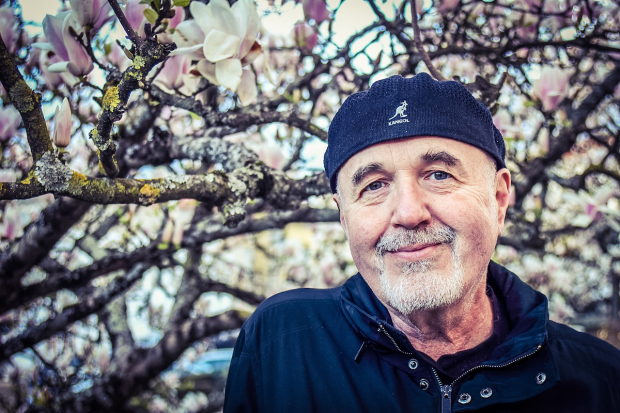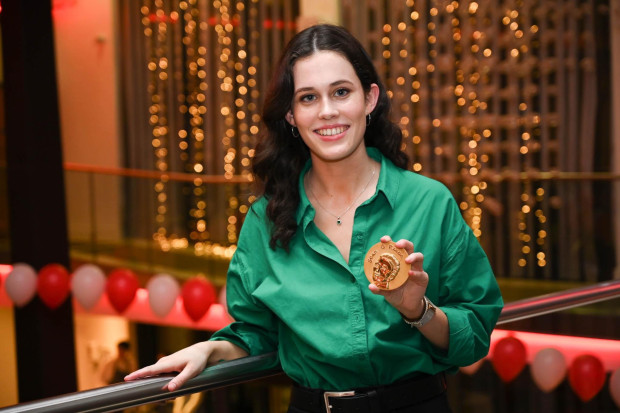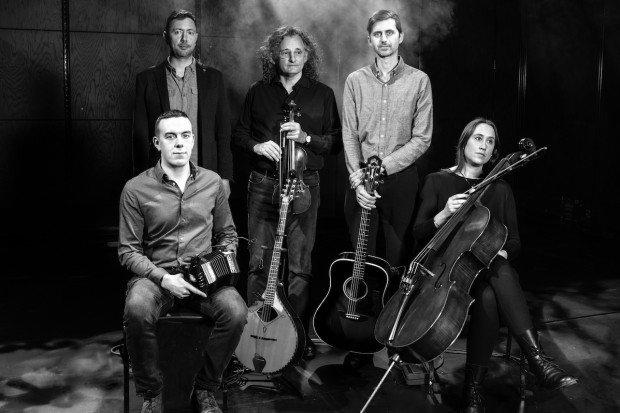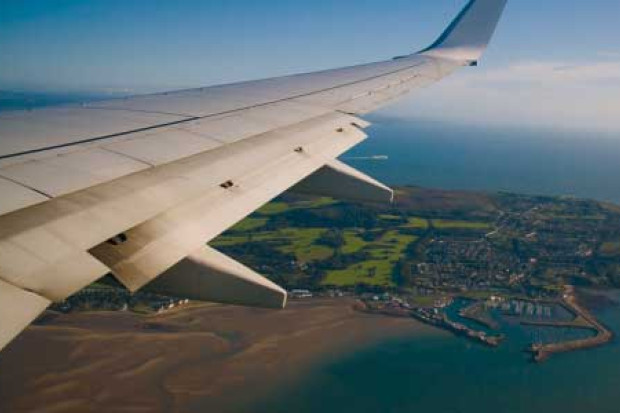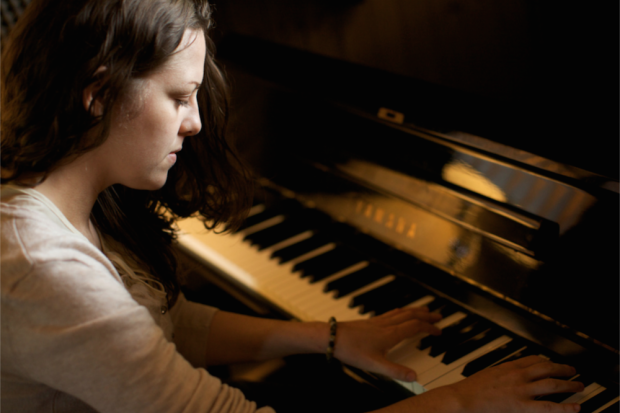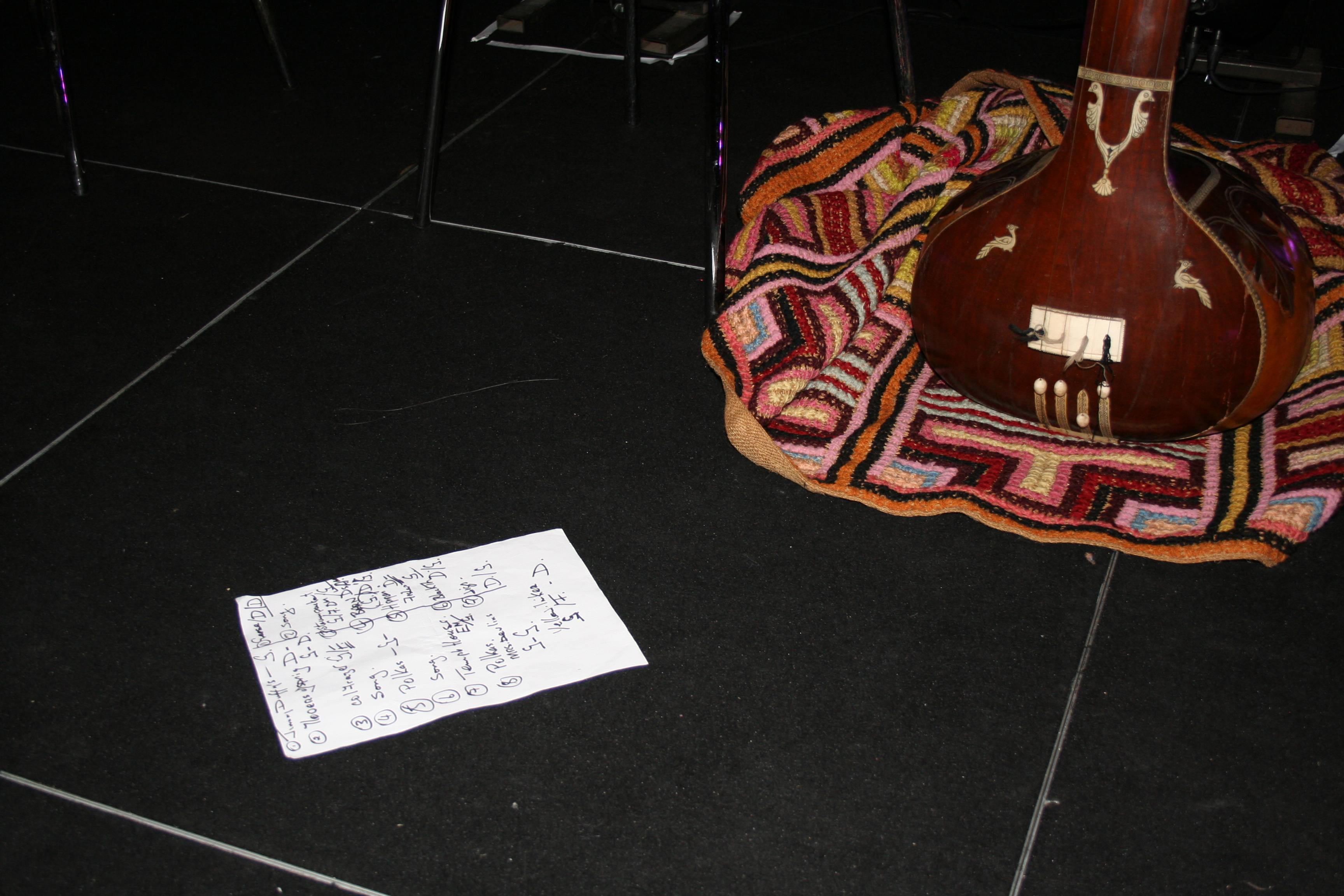
A Very Irish Form?
Peadar Ó Riada’s tambura with Triúr’s set list for a concert in Gaoth Dobhair at last year’s Scoil Gheimhridh Frankie Kennedy.
Having just been featured in an episode of Other Voices on RTÉ, the trio of Peadar Ó Riada, Martin Hayes and Caoimhín Ó Raghallaigh as Triúr are also the subject of a forthcoming documentary film, called 3-Triúr – In Search of Musical Form by film maker Dónal Ó Céilleachair. It is to be broadcast for the first time on RTÉ One next Tuesday, 3 April at 10.15pm.
As Ó Riada describes it, Ó Céilleachair ‘has been living in our ears for the last four years with this. We are a little apprehensive obviously as we forgot [about] the cameras.’ As Ó Céilleachair describes it: ‘It’s rare for musicians of this calibre to allow a filmmaker such extensive access to the intimate, private, often painful creative process, but that’s exactly what they [Triúr] agreed to do for this documentary: an incredible opportunity to view the tradition from three unique perspectives and generations.’
The film begins with the three gathering in April 2009, before the idea of Triúr even existed, to explore what Martin described as ‘their shared understanding of the music’ and follows their interactions for three years, culminating on the stage of the Abbey Theatre in February 2012 as they launch their second album.
Ó Céilleachair explains how the project originated: ‘In August, 2007 I was invited home from New York to exhibit my work in Cork. Peadar Ó Riada attended the exhibition and described my film [With Wind and White Cloud] as “one of the most Irish films he had ever seen”. I was quite surprised because my film owed more in form and style to experimental film than to anything I was aware of in Irish culture. This was my first time meeting Peadar and as an impromptu conversation unfolded I was forced to re-appraise my understanding of some key aspects of Irish culture.
‘What Peadar pointed to was the cyclical form of Irish traditional music and culture that was fundamentally different to the notion of development in European music and culture…. We took jig time and all these other times and we turned them into a cyclical object so that rather than playing them like Bach or Beethoven and going through and developing it towards catharsis and resolution we played them again and again, and it was in the variation from each cycle of playing through it (that) made it Irish.
‘This led me to consider the fact that a specific personal worldview that I had searched for in other cultures and art forms for nearly twenty years abroad might be lurking fifteen miles to the west of my own home town in the Muskerry Gaeltacht. I spent time filming back in Cúil Aodha and Báile Mhúirne, reconnecting with the local culture, the landscape of my youth, family and friends – a time that culminated in me becoming the Filmmaker-in-residence in the Ionad Cultúrtha, Baile Mhúirne in 2008. The idea behind my film Amhrán an tSuláin (a “sister” film to this project) germinated in that period, and this concept of a very specific Irish form is of course central to 3-Triúr – In Search of Musical Form.’
Following this form, the film about Triúr features a number of cycles structured around individual tunes of Ó Riada’s, following their evolution through the various stages of development: composition, working through, and playing until they take a final form.
Other people who worked on the film include Bob Kelly (co-producer), Emer Mullarkey, and also Brid Cranitch, director of Ionad Cultúrtha, Ballyvourney, Co Cork.
Published on 30 March 2012












